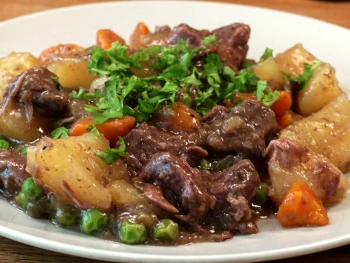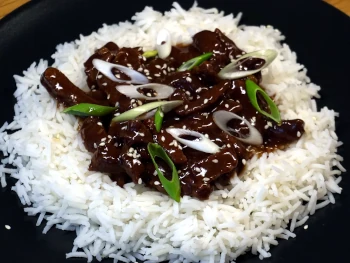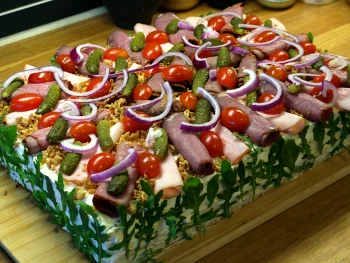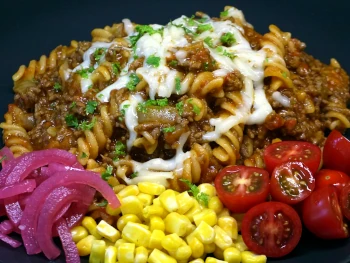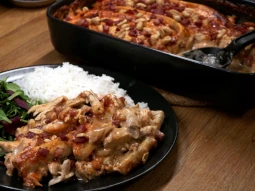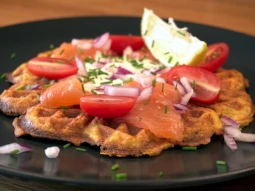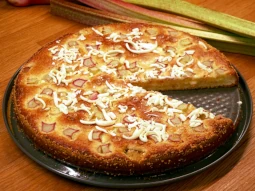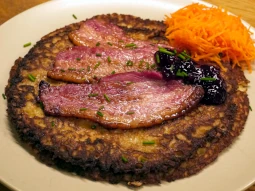Kebab Meat.
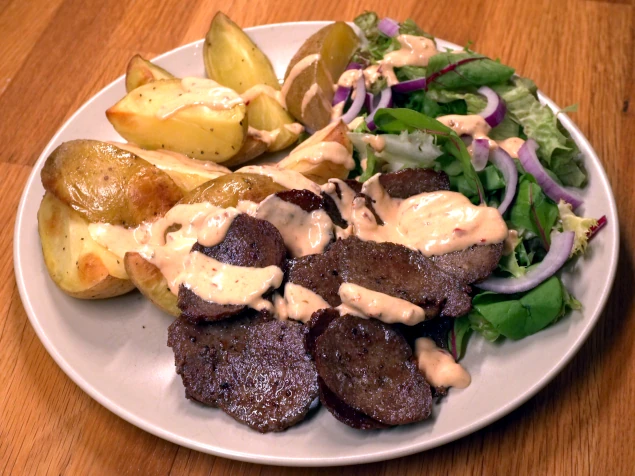
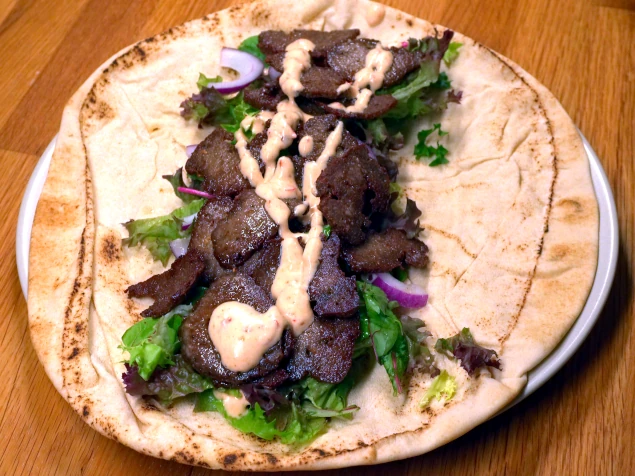
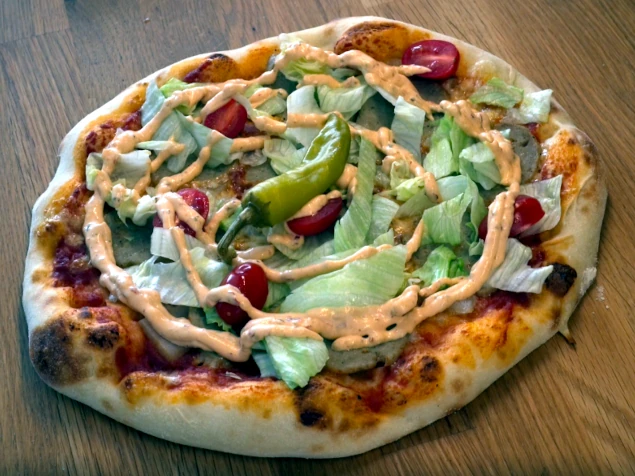
| Servings | 4 Portions |
| Tags | Beef | Main Course | Party Food | Pork | Turkish |
| Allergens | Eggs |
| Prep Time | 15 min |
| Rest Time | 60 min |
| Cook Time | 180 min |
A variant of kebab meat that is made from minced meat and needs some time to be cooked in the oven. I use this very simple recipe to cook the kebab meat I use for kebab pizza (see recipe for kebab pizza in this collection), kebab plate (see picture in this recipe) or kebab roll (by kebab roll I mean a larger kebab surrounded by rolled pizza base). You can also use the spices for whole pieces of meat of e.g. pork loin instead, but for this particular recipe I want to create a roll of kebab meat which you then slice off from as needed. You could probably mount the meat on a rotisserie-like device as well, although then you might as well have had to modify the ingredients a lot. I think this recipe is best with minced meat 50/50 beef/pork, but I have used beef, lamb and chicken as well.
One of the best things about making kebab meat yourself is that you can enjoy the flavors of the fast food without worrying about any strangeness in the meat. I really like this one and often cook a double batch, which I then slice and freeze. Then you just have to pick it out of the freezer and fry quickly in a frying pan and you have a really good kebab ready. With a little liba bread, mixed salad and garlic sauce, you have a simple, fast and very good kebab roll with minimal effort. Or why not roast some potatoes in the oven and supplement with salad and garlic sauce for a kebab plate instead?
The origin behind the kebab we know in Sweden comes from the Middle East, where grilled meat with bread is common, but the countries around the Mediterranean and South Asia also have their varieties of kebabs (eg Greek gyros). The modern Döner began to be sold in Istanbul in the 1940s and became more widespread in the 1960s. The Döner kebab then spread to West Germany in the 1970s with Turkish immigrants and from there it spread to the rest of Western Europe. It was not until 1980 that kebabs were launched in Sweden and then by a number of different restaurants at the same time.
You can use different types of meat such as. beef, lamb, pork or chicken. The most common is beef and if the kebab is cooked on pork, it is often called gyros instead. Döner kebab is minced or sliced meat, fat and spices that are pressed together into a roll which is then grilled in a kebab grill. When the outer layer is ready to grill, cut thin strips using a kebab peeler. Shish kebabs are pieces of whole or minced meat that are marinated and grilled on small skewers. Typical spices in kebab seasoning are onion powder, garlic, cumin, oregano and coriander. You can use finely grated fresh onion and garlic, but I think it will be better to use onion powder and garlic powder. If you use fresh onions, you should try to squeeze out as much liquid as you can before mixing it into the other ingredients.
Variants- Mix in a little paprika powder for both taste and color.
- Replace the egg with a tablespoon of flour.
- Mix different types of minced meat such as beef and lamb.
Ingredients
Directions
- Mix all ingredients in a bowl - put it in the fridge for about an hour.
- Start the oven - 100 degrees celsius.
- Roll the meat in aluminium foil but leave the ends open. Put it on the oven above a baking tray that will pick up the fat that will drip out of the ends.
- Cook in the oven for 3 hours.
- Take the meat out of the oven, let it cool down for about 30 minutes. From this point you can store the meat in the fridge over night.
- Cut into thin slices and freeze until its time to use them. The meat can be a little pink in the middle, which is OK as it should still be fried a few minutes before serving.
- The slices stay frozen for months and do not need to be thawed before frying - just throw them in a hot frying pan with oil and fry for a few minutes.
Nutrition Facts*
| Total | Serving | 100 g | |
|---|---|---|---|
| Energy | 1132.8 kcal | 283.2 kcal | 192 kcal |
| Carbohydrates | 13.1 g | 3.27 g | 2.22 g |
| Fat | 74.05 g | 18.51 g | 12.55 g |
| Protein | 104.02 g | 26 g | 17.63 g |
| Sugar | 0.94 g | 0.24 g | 0.16 g |
| Salt | 6.14 g | 1.53 g | 1.04 g |
* The nutritional information provided is approximated and calculated using the ingredients available in the database. Info will vary based on cooking methods and brands of ingredients used.I am not a certified nutritionist. Please consult a professional nutritionist or doctor for accurate information and any dietary restrictions and concerns you may have.
